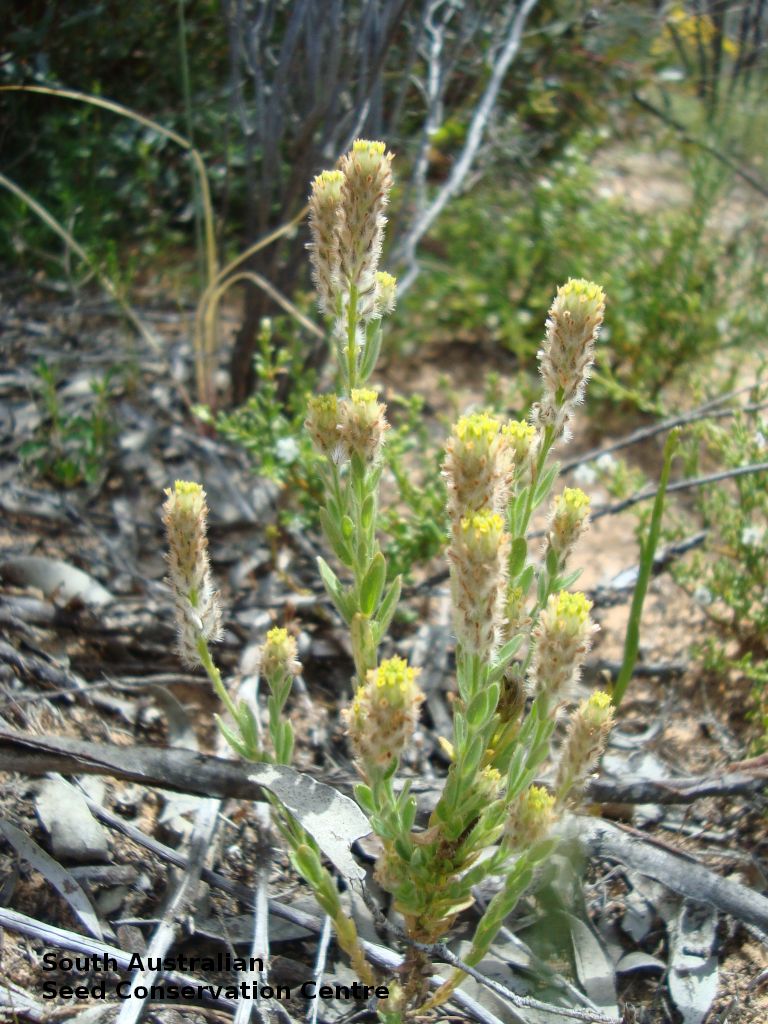
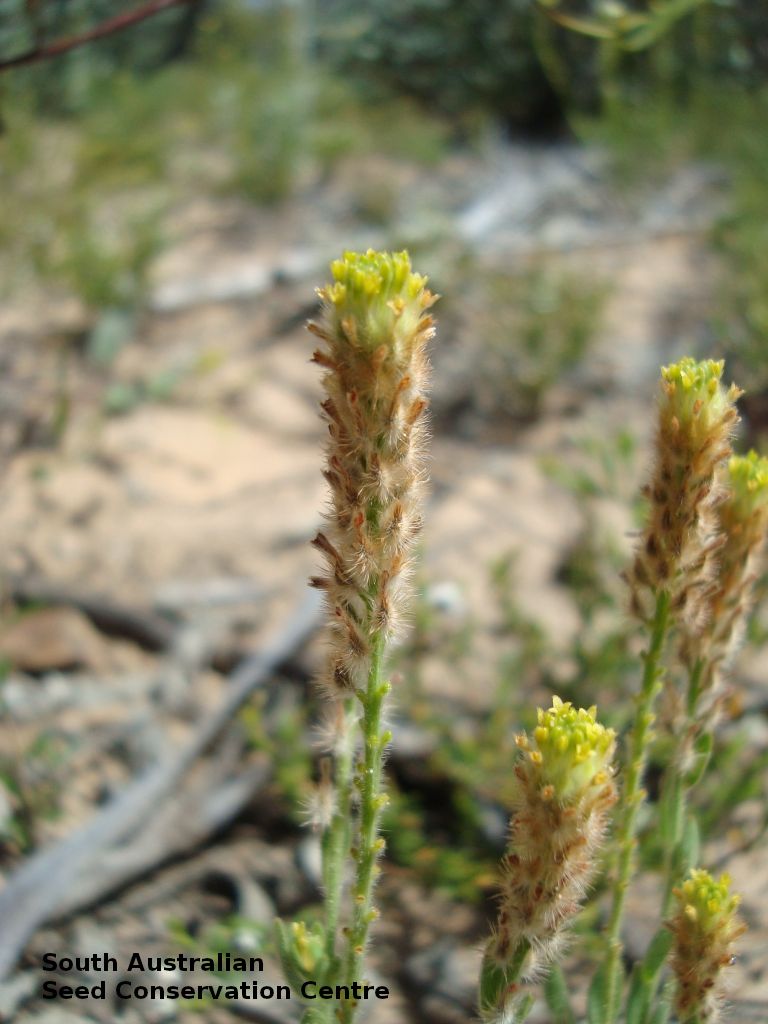
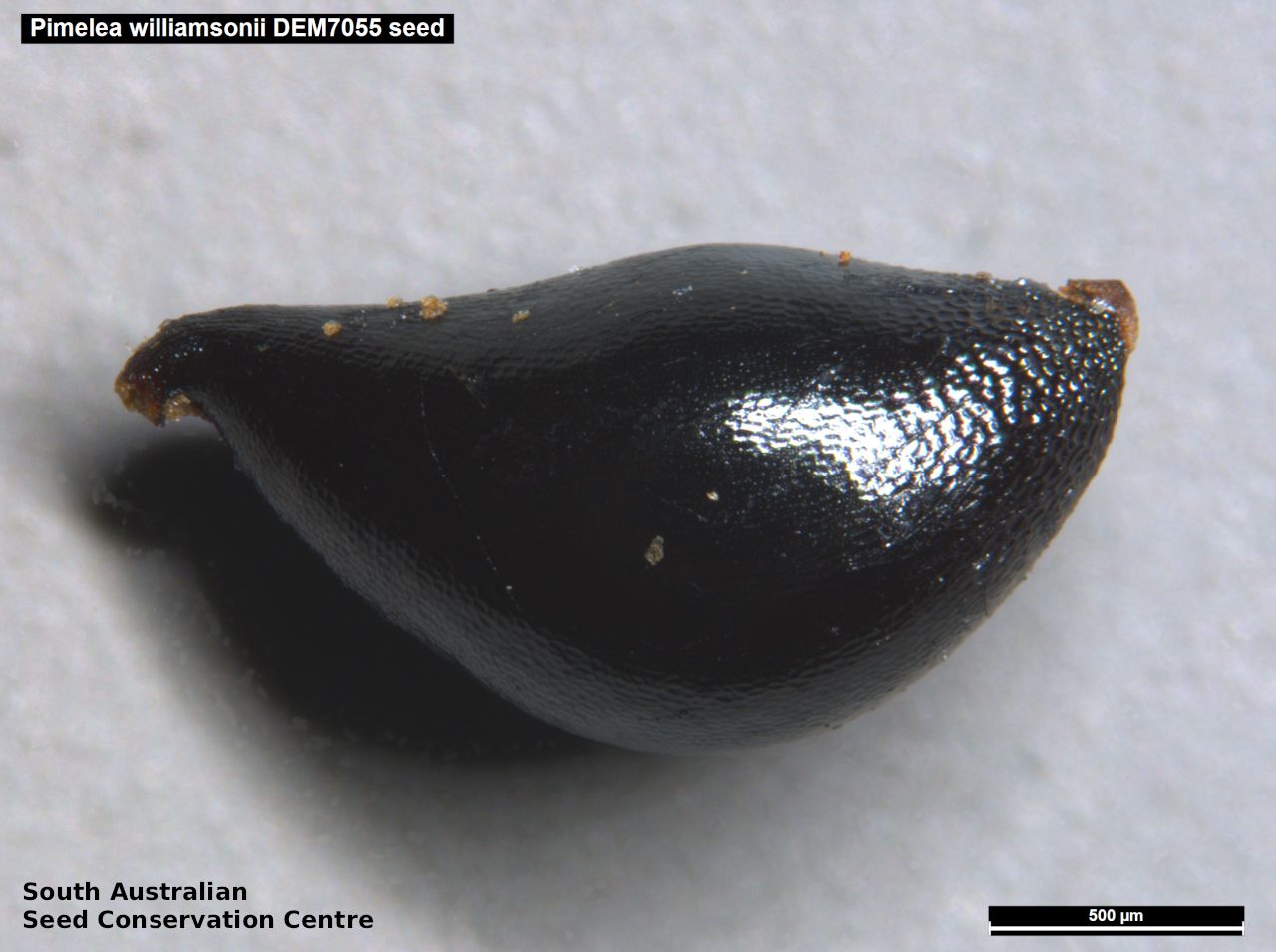

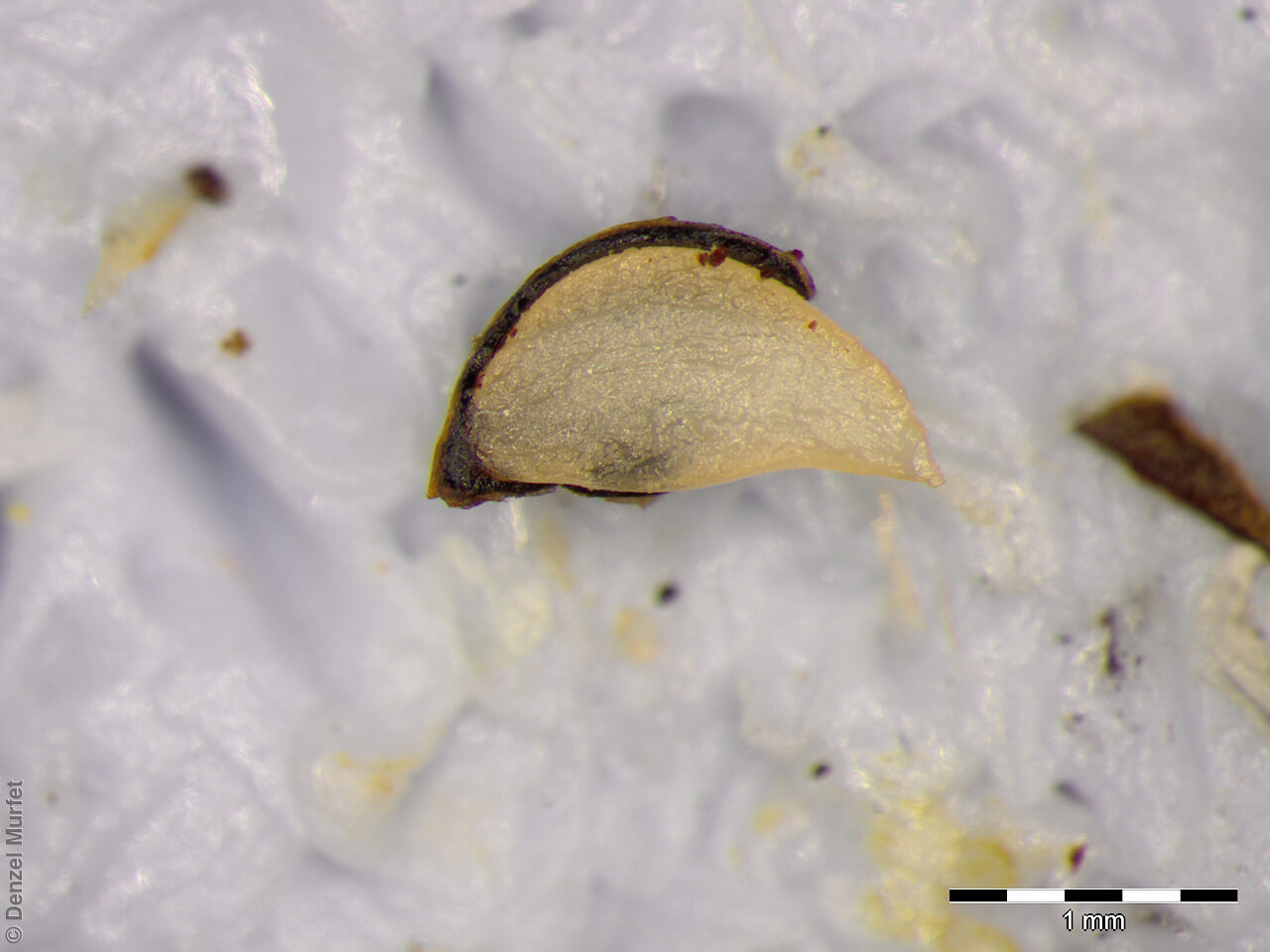
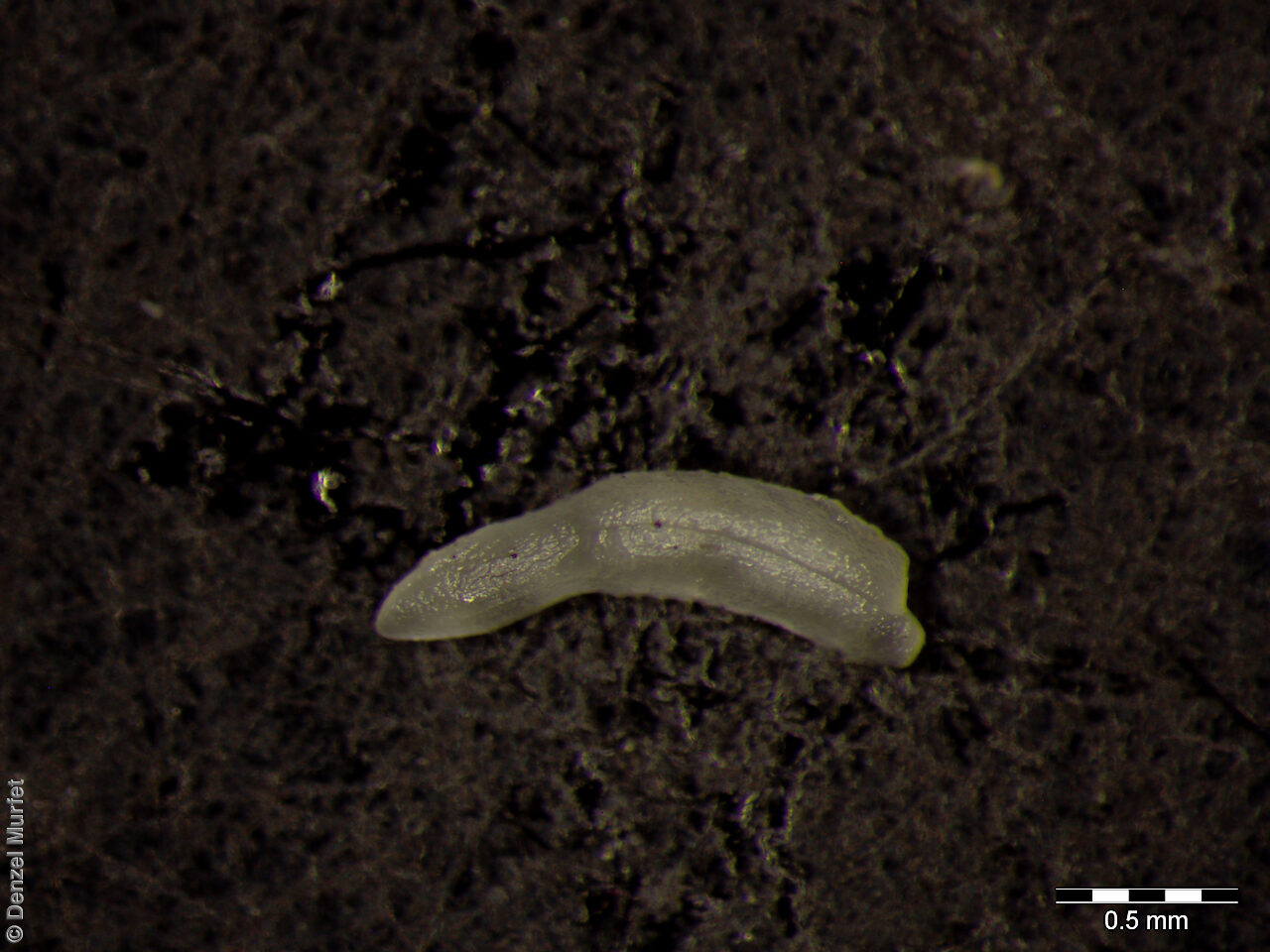
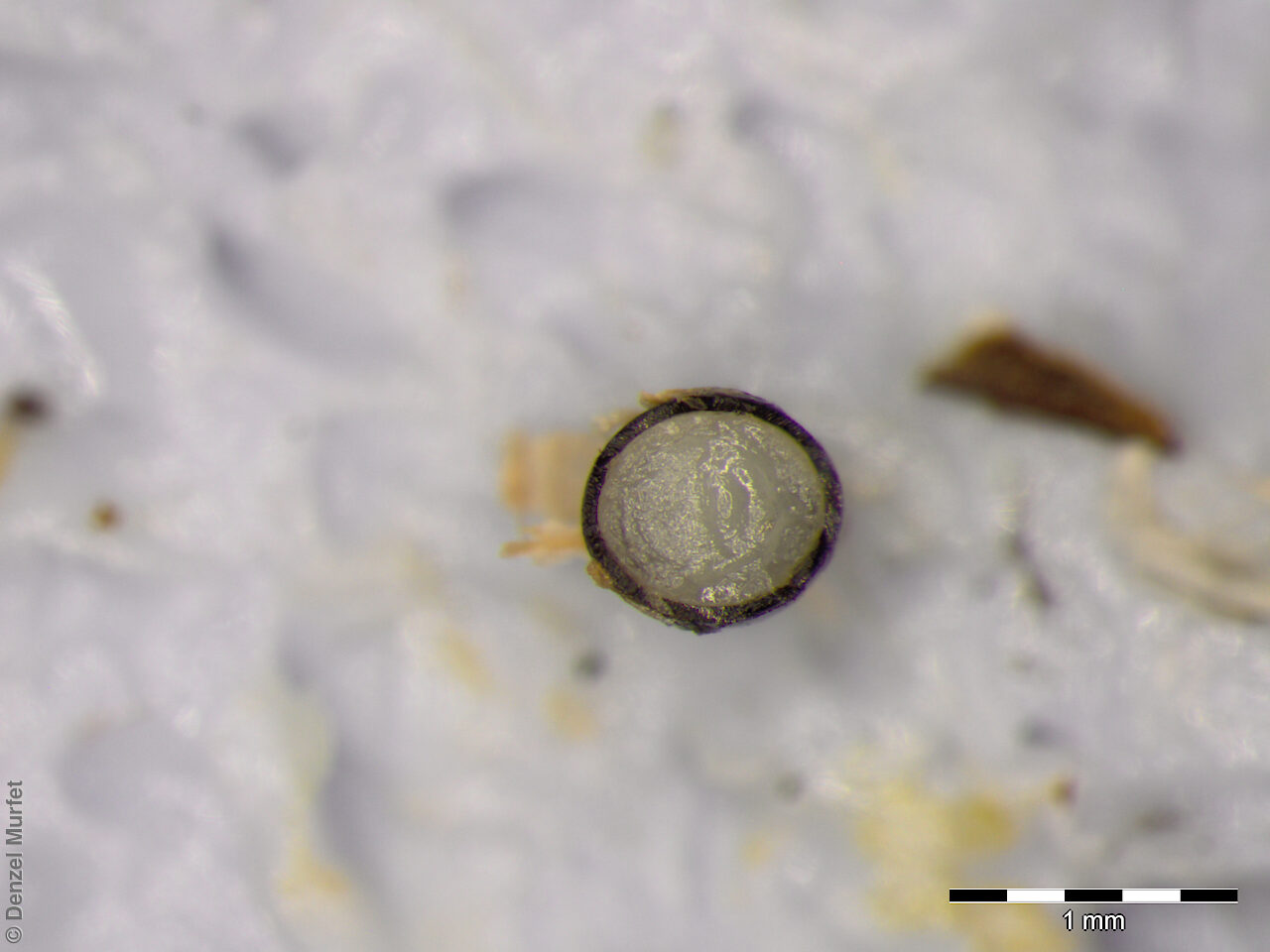


Botanical art
Common names
Williamson's Riceflower
Etymology
Greek 'pimele' fat, alluding to the fleshy cotyledons and
Distribution and status
Sandy soils and disturbed sites, often observed post-fire Rare
Herbarium regions: Eyre Peninsula, Murray
AVH map: SA distribution map (external link)
Plant description
Wooly subshrub to 30cm tall. Leaves elliptic, 2.5-16 mm long, 1-5 mm wide, acute to obtuse, lower surface with coarse antrorse white or colourless hairs and the upper surface with fewer and finer hairs. Inflorescence a terminal spike to 6.5cm long. Flowers bisexual, white, 3.5-5 mm long. Flowering most of the year. Seeds are seed ventricose, hooked at the apex, glabrous, black, finely reticulate 1-5mm
Seed collection and propagation
Collect seeds between November and December.
| Location | No. of seeds (weight grams) | Number of plants | Date collected | Collection number Collection location | Date stored | % Viability | Storage temperature |
|---|---|---|---|---|---|---|---|
| BGA MSB | 2,100 (1.18 g) 2,100 (1.18 g) | 50+ | 16-Nov-2010 | DEM7055 South Eastern | 1-Jan-2012 | 95% | -18°C |
Number of plants: This is the number of plants from which the seeds were collected.
Collection location: The Herbarium of South Australia's region name.
% Viability: Percentage of filled healthy seeds determined by a cut test or x-ray.